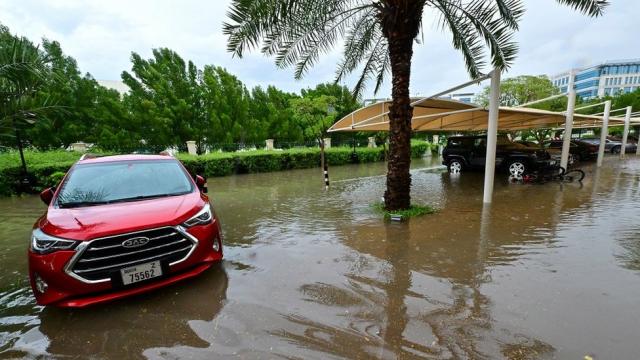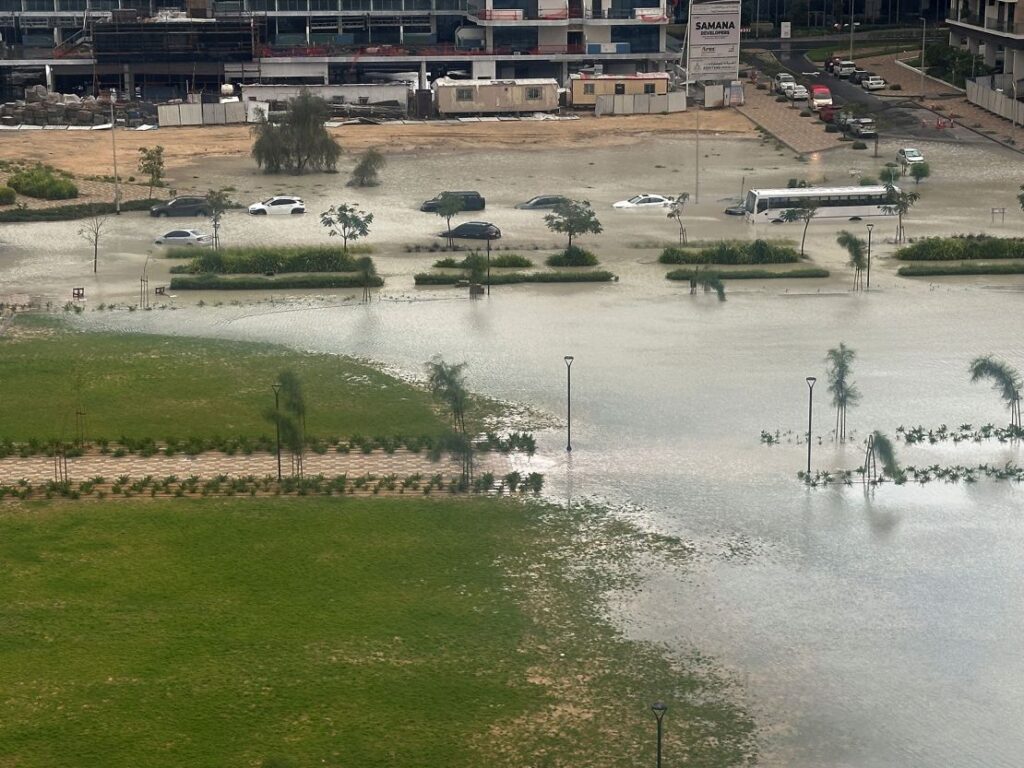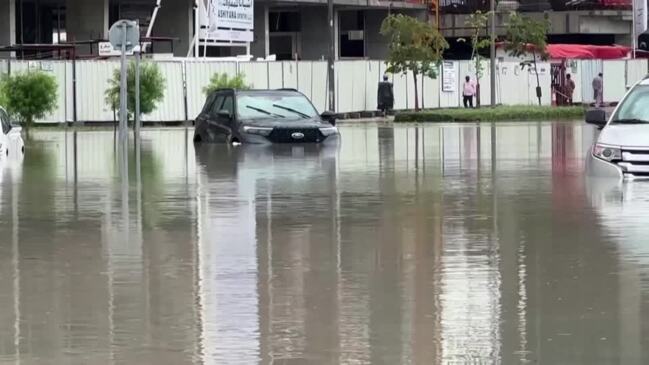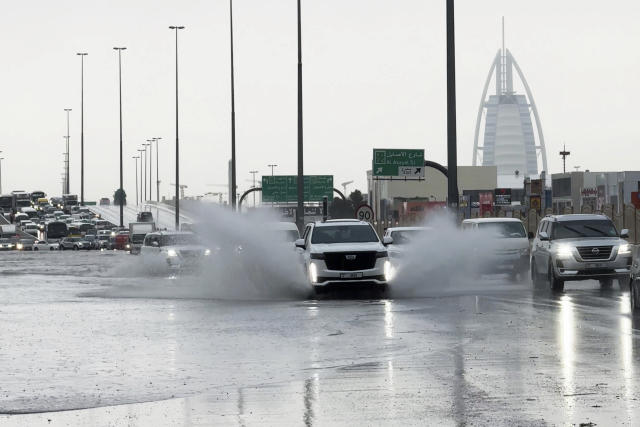Dubai, renowned for its futuristic skyline and bustling aviation industry, found itself grappling with an unexpected adversary recently: nature’s fury. A fierce storm, described as having “exceptional weather” conditions, swept across the city, transforming its landscape into scenes reminiscent of maritime chaos rather than the usual desert tranquility. As heavy rain and thunderstorms pounded the United Arab Emirates (UAE) overnight, Dubai International Airport, typically a symbol of seamless air travel, became submerged under torrents of water, leaving planes to navigate what now resembled a marina more than a runway.
Social media became inundated with surreal footage capturing the extent of the flooding. Videos circulated widely, showing planes taxiing through aprons inundated with standing water, and terminals resembling flooded docks rather than bustling hubs of transit. One particularly striking image depicted an Emirates plane parked at its gate, seemingly marooned amidst a sea of water—a surreal juxtaposition against the city’s usual dry landscape.
The havoc wreaked by the storm extended beyond the airport’s confines. Dubai Mall and Mall of the Emirates, iconic retail landmarks, were not spared, facing their own battles with flooding. Even the Dubai Metro, a lifeline for commuters, saw water levels rise, creating ankle-deep pools within its stations.
For the residents of Dubai, accustomed to the city’s arid climate and relentless summer heat, this deluge came as a stark reminder of nature’s unpredictability. Roads collapsed under the weight of the downpour, while schools across the UAE were forced to shutter their doors in the face of the inundation. In some inland areas, rainfall exceeded 80 millimeters over a mere 24 hours, nearing the region’s annual average—a testament to the intensity of the storm.
Tragically, the storm’s impact extended beyond Dubai’s borders. Across the UAE and neighboring Oman, the rains claimed lives and caused widespread destruction. Oman, in particular, mourned the loss of 18 individuals amidst the chaos unleashed by the tempest.
In the wake of this disaster, questions naturally arise about the role of climate change. Experts, including those from the Grantham Institute for Climate Change at Imperial College London, assert that human-induced climate change likely exacerbated the severity of the rainfall, transforming what might have been a manageable storm into a catastrophic event.
As Dubai and its neighbors grapple with the aftermath of this unprecedented deluge, the incident serves as a stark reminder of the need for resilience in the face of nature’s wrath. It underscores the urgency of addressing climate change and its far-reaching implications, not just for the UAE but for the entire planet.
In the midst of this adversity, however, stories of resilience emerge. Images of Emirates crew wading through floodwaters, determined to fulfill their duties despite the odds, serve as poignant reminders of human tenacity in the face of adversity. As the waters recede and Dubai rebuilds, it does so not just with bricks and mortar but with the unwavering spirit of its people—a spirit unyielding even in the face of nature’s might.






